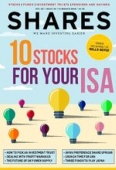Archived article
Please note that tax, investment, pension and ISA rules can change and the information and any views contained in this article may now be inaccurate.
Three funds to play a stronger Japanese market

Finding decent returns in developed markets can be tricky, especially for the risk-averse investor unwilling to enter into the volatile realm of emerging markets.
However, we think Japan looks interesting after a long period left in the cold due in part to unwieldy corporate structures of its companies.
Prime minister Shinzo Abe and his monetary policy, the eponymously dubbed Abenomics, is widely credited for the turnaround in corporate Japan.
Essentially, Abe and the governor of the Bank of Japan Haruhiko Kuroda put through policies that benefited Japanese companies such as devaluing the yen. This boosts the exporters’ earnings.
Other impingements to investing in Japan are also being addressed such as the corporate structure of Japanese companies which has historically been a major barrier for investing in Japan.
MAKING CLEAR PROGRESS
Nicholas Weindling, fund manager of JP Morgan Japan (GB00B235RG08), comments: ‘We believe corporate governance improvements are the biggest, clearest area of success for Abenomics, at least from a market perspective.’
The reforms are aimed at unwinding a cross-shareholding of companies and revamping their ownership structures.
The ownership structure, called ‘keiretsu’, was essentially insider capitalism that incentivised bad economic decision making.
Banks would lend to their linked companies to maintain relationships rather than on economic merit. Unsurprisingly, this led to zero pricing power or competitive diversification as companies depended on the conglomerates and banks that own them.
SOLID INVESTMENT RETURNS
Last year the average fund in the Investment Association’s Japan sector was up by 17.9% in value, the best performing developed market.
With GDP growing and the green shoots of inflation starting to show, now is the time to think about adding some Japanese exposure to
your portfolio.
British Empire Trust (BTEM)
Joe Bauernfreund, manager of British Empire Trust (BTEM), last year rejigged the investment trust’s portfolio to include a large holding of Japanese equities.
He says that while corporate reforms are high on Abe and Kuroda’s agenda, corporate relationships built on cross-shareholding are part of ‘decades of Japanese culture and slow to unwind’.
Bauernfreund has Japan Special Situations as the top holding within the trust, a basket of companies selected due to the large amounts of cash they hold, among other factors.
The basket has outperformed the Tokyo Stock Price Index (TOPIX) by 16% since inclusion. Although Bauernfreund hopes these companies will return excess cash to shareholders, he says the outperformance has been generated by earnings growth.
The companies in the Japan Special Situations basket all trade on cheap valuations from a variety of sectors. Kato Sangyo, a food wholesale business, trades at a 23% discount while steel manufacturer Yamato Kogyo trades on a 42% discount to net asset value.
JP Morgan Japan C Fund (GB00B235RG08)
This fund invests in large cap Japanese companies. Top holding electronics manufacturer Keyence has returned 42% in
a year. The second largest holding, cosmetics firm Shiseido, has returned 119% over the same period.
At the fund level it has returned 17.8% on a five year annualised basis, more than three times the return of the TOPIX index.
Fund manager Nicholas Weindling says more companies are doing share buybacks and are including metrics such as return on equity as part of their targets.
He says the market has rewarded the companies with improving governance policies overall, including shareholder returns, internal controls and disclosure, and that the trend is likely to continue.
Morningstar gives this fund a risk rating of six, with the highest risk being seven. While equity investing carries a degree of risk, Weindling says that Japan has tended to exhibit ‘high beta characteristics and this is what we are currently observing’.
Beta is a measure of volatility; a company with a beta of more than one is more volatile than the underlying market.
More broadly, Weindling says the biggest risk remains a return to a deflationary environment ‘but a more likely scenario is a mildly positive inflation figure below the government’s 2% target’.
Baillie Gifford Japanese Smaller Companies (GB0006014921)
Co-manager Felecia Hjertman says Japan has its own ‘market idiosyncrasies that are quite different to other major markets’ adding that this makes it an ‘interesting place’ to look for investment returns.
The fund’s top holding, payment processing company GMO Payment Gateway, has returned 83% in a year. Its second largest, an internet home delivery firm called Yume No Machi Souzou Iinkai Co, has returned 144% in a year.
The stock picking capabilities of the fund managers working in Japan should not be underestimated and success not just attributed to macro-economic drivers.
Japanese equities aren’t expensive with the TOPIX index trading on 13.7 times forecast earnings for 2018, the same as the FTSE 100 index in the UK. In comparison, the S&P index in the US trades on a forward multiple of 17.6. (DS)
Important information:
These articles are provided by Shares magazine which is published by AJ Bell Media, a part of AJ Bell. Shares is not written by AJ Bell.
Shares is provided for your general information and use and is not a personal recommendation to invest. It is not intended to be relied upon by you in making or not making any investment decisions. The investments referred to in these articles will not be suitable for all investors. If in doubt please seek appropriate independent financial advice.
Investors acting on the information in these articles do so at their own risk and AJ Bell Media and its staff do not accept liability for losses suffered by investors as a result of their investment decisions.
Issue contents
Big News
- AJ Bell customers given priority access to company’s IPO share offer
- An increasing number of investment trust dividend heroes
- Spring Statement reveals (slightly) improved economic picture
- Gem Diamonds is on a roll with high quality discoveries
- Time is running out for GKN shareholders to vote on Melrose takeover offer
- Labour strike risk could lead to higher copper price
- Why is the dollar struggling?
- Big fall in London house prices
- Aviva under fire for plan to cancel high-yielding shares

 magazine
magazine








